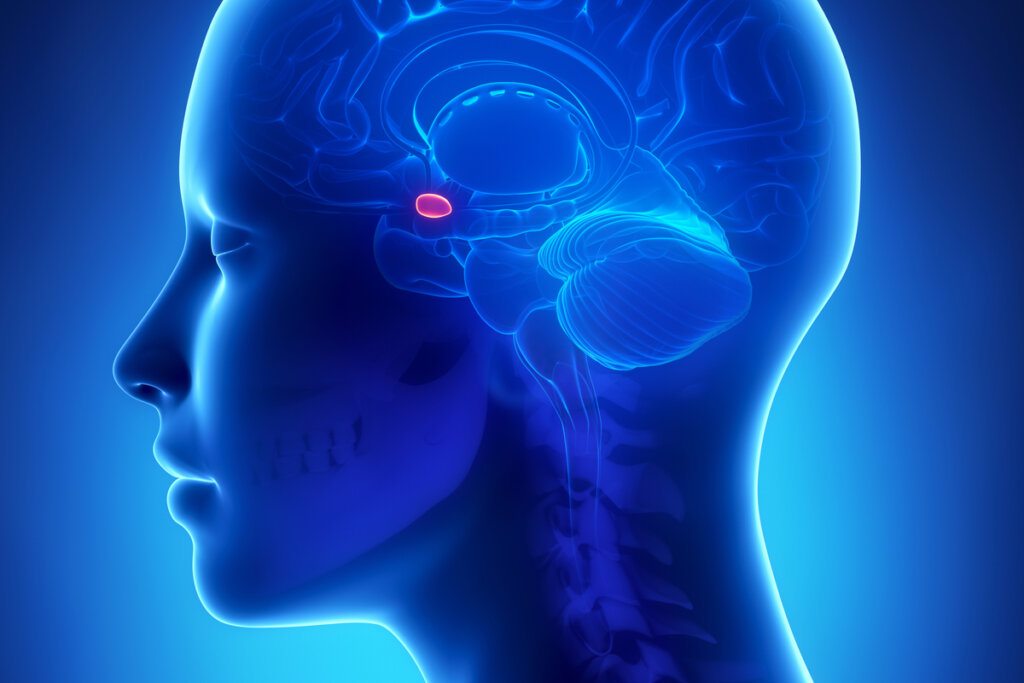Why You Trust Some Faces More Than Others


Written and verified by the psychologist Laura Ruiz Mitjana
What does trust depend on? Have you ever wondered why you trust some people more than others? If you’ve just met someone, what do you look at to figure out if you can trust them or not? A key factor could be the similarity of their face to yours. It seems that the greater the similarity between you, the greater your confidence in them.
Indeed, science claims that we trust more in faces that look like our own. This is suggested in a recent study conducted by Tamami Nakano and Takuto Yamamoto, from the University of Osaka (Japan). It was published in Humanities & Social Science Communications.
In this article, we’ll talk about why you might trust some faces more than others, taking this interesting study (and others) as references.
We trust more in faces that look like ours
The study suggests that we trust someone we’ve just met more if their face resembles ours. However, this rule only seems to apply to people of the same sex. In other words, we’re more trusting toward people whose faces resemble ours, but only when they’re the same sex as us.
On the other hand, when the stranger is of the opposite sex, the resemblance to ourselves doesn’t affect the extent to which we trust them. On a biological level, the trust that another inspires in us appears to be linked to the activation of the amygdala at certain times. This is a subcortical brain region that plays a crucial role in generating fear responses.

The study
The researchers recruited 200 Japanese college students, 100 male, and 100 female, aged between 19 and 24. They took full frontal images of each student. In the photos, the students adopted neutral expressions and wore no glasses or accessories.
The face area was cropped to fit a square shape, and all photographic images were left at a size of 512 x 512 pixels. This provided the study material.
The evaluators
The researchers chose a group of people to conduct the experiment and analyze the 200 photos. They selected 30 Japanese university students (15 men and 15 women), also aged 19 to 24. They were in charge of evaluating how trustworthy the faces in the photos seemed to them.
The participants sat in front of a monitor, at a distance of 65 cm. The researchers presented them with each photo for 0.5 s. The researchers then asked them to rate the trustworthiness of the face on a scale of one (very untrustworthy ) to seven (very trustworthy), using a number pad.
The study of trust
To assess trustworthiness, the evaluators (the group of 30 students) had to imagine if they would trust the person in the image with their money.
A positive response was coded by the study results as a sign of trust and a negative as distrust. Regarding the dynamics of the experiment, every one-and-a-half seconds, the researchers presented a new face to the evaluators (participants).
Study results
It seems that the participants automatically calculated the similarity of a stranger’s face with their own. Moreover, the analysis of the data showed that they were more confident in faces that resembled their own when they were of the same sex.
The amygdala: a possible explanation of trust or mistrust
So, why does the resemblance to ourselves affect the perception of trustworthiness or degree of trust? One possible explanation could be of a psychobiological nature.
In fact, previous investigations to this end have been conducted by Winston et al. (2002) and Engell et al. (2007). They conducted both experiments with brain images. They reported that the activity of the amygdala (a brain structure in charge of processing and storing emotional reactions such as fear, essential for survival) increases in front of faces deemed untrustworthy.
Amygdala activity increases when a person is faced with a suspicious-looking face.
On the other hand, another study conducted by Adolphs et al. (1998) found that patients with bilateral amygdala lesions rated every face presented to them as trustworthy.
The amygdala is activated when we see faces that don’t resemble our own
The results of the current study implied that the amygdala is activated by seeing faces that don’t resemble our own. In contrast, it’s suppressed when we encounter faces that look like ours.

Similar faces produce positive emotions
So why do you trust or distrust certain faces? Nakano and Yamamoto, authors of the study, suggest that similar faces produce positive valence. Therefore, you evaluate these people as confident and attractive. This suppresses the activity of your amygdala. In turn, it makes you perceive that face as worthy of your trust.
Thus, a possible hypothesis for these results is that the faces that are most similar to our own produce pleasant sensations in us. From that state of positive activation, it’s easier to give a greater degree of trust to that individual.
What does trust depend on? Have you ever wondered why you trust some people more than others? If you’ve just met someone, what do you look at to figure out if you can trust them or not? A key factor could be the similarity of their face to yours. It seems that the greater the similarity between you, the greater your confidence in them.
Indeed, science claims that we trust more in faces that look like our own. This is suggested in a recent study conducted by Tamami Nakano and Takuto Yamamoto, from the University of Osaka (Japan). It was published in Humanities & Social Science Communications.
In this article, we’ll talk about why you might trust some faces more than others, taking this interesting study (and others) as references.
We trust more in faces that look like ours
The study suggests that we trust someone we’ve just met more if their face resembles ours. However, this rule only seems to apply to people of the same sex. In other words, we’re more trusting toward people whose faces resemble ours, but only when they’re the same sex as us.
On the other hand, when the stranger is of the opposite sex, the resemblance to ourselves doesn’t affect the extent to which we trust them. On a biological level, the trust that another inspires in us appears to be linked to the activation of the amygdala at certain times. This is a subcortical brain region that plays a crucial role in generating fear responses.

The study
The researchers recruited 200 Japanese college students, 100 male, and 100 female, aged between 19 and 24. They took full frontal images of each student. In the photos, the students adopted neutral expressions and wore no glasses or accessories.
The face area was cropped to fit a square shape, and all photographic images were left at a size of 512 x 512 pixels. This provided the study material.
The evaluators
The researchers chose a group of people to conduct the experiment and analyze the 200 photos. They selected 30 Japanese university students (15 men and 15 women), also aged 19 to 24. They were in charge of evaluating how trustworthy the faces in the photos seemed to them.
The participants sat in front of a monitor, at a distance of 65 cm. The researchers presented them with each photo for 0.5 s. The researchers then asked them to rate the trustworthiness of the face on a scale of one (very untrustworthy ) to seven (very trustworthy), using a number pad.
The study of trust
To assess trustworthiness, the evaluators (the group of 30 students) had to imagine if they would trust the person in the image with their money.
A positive response was coded by the study results as a sign of trust and a negative as distrust. Regarding the dynamics of the experiment, every one-and-a-half seconds, the researchers presented a new face to the evaluators (participants).
Study results
It seems that the participants automatically calculated the similarity of a stranger’s face with their own. Moreover, the analysis of the data showed that they were more confident in faces that resembled their own when they were of the same sex.
The amygdala: a possible explanation of trust or mistrust
So, why does the resemblance to ourselves affect the perception of trustworthiness or degree of trust? One possible explanation could be of a psychobiological nature.
In fact, previous investigations to this end have been conducted by Winston et al. (2002) and Engell et al. (2007). They conducted both experiments with brain images. They reported that the activity of the amygdala (a brain structure in charge of processing and storing emotional reactions such as fear, essential for survival) increases in front of faces deemed untrustworthy.
Amygdala activity increases when a person is faced with a suspicious-looking face.
On the other hand, another study conducted by Adolphs et al. (1998) found that patients with bilateral amygdala lesions rated every face presented to them as trustworthy.
The amygdala is activated when we see faces that don’t resemble our own
The results of the current study implied that the amygdala is activated by seeing faces that don’t resemble our own. In contrast, it’s suppressed when we encounter faces that look like ours.

Similar faces produce positive emotions
So why do you trust or distrust certain faces? Nakano and Yamamoto, authors of the study, suggest that similar faces produce positive valence. Therefore, you evaluate these people as confident and attractive. This suppresses the activity of your amygdala. In turn, it makes you perceive that face as worthy of your trust.
Thus, a possible hypothesis for these results is that the faces that are most similar to our own produce pleasant sensations in us. From that state of positive activation, it’s easier to give a greater degree of trust to that individual.
All cited sources were thoroughly reviewed by our team to ensure their quality, reliability, currency, and validity. The bibliography of this article was considered reliable and of academic or scientific accuracy.
- Adolphs, R., Tranel, D. & Damasio, A. The human amygdala in social judgment. Nature 393, 470–474 (1998). https://doi.org/10.1038/30982
- Andrew D. Engell, James V. Haxby, Alexander Todorov; Implicit Trustworthiness Decisions: Automatic Coding of Face Properties in the Human Amygdala. J Cogn Neurosci 2007; 19 (9): 1508–1519. doi: https://doi.org/10.1162/jocn.2007.19.9.1508
- Nakano, T. & Yamamoto, T. (2022). You trust a face like yours. Humanities & Social Science Communications, 9(1).
-
Winston, J., Strange, B., O’Doherty, J. et al. Automatic and intentional brain responses during evaluation of trustworthiness of faces. Nat Neurosci 5, 277–283 (2002). https://doi.org/10.1038/nn816
This text is provided for informational purposes only and does not replace consultation with a professional. If in doubt, consult your specialist.







